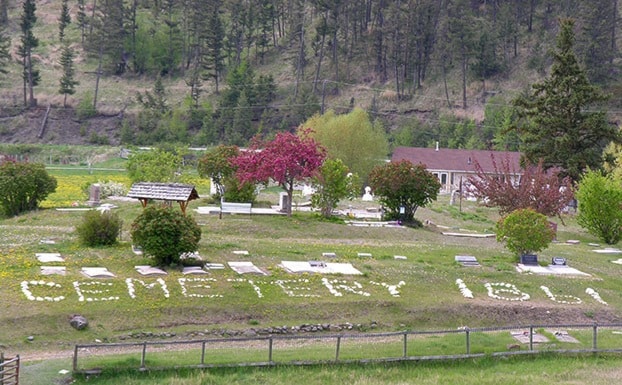In 1915, anyone condemned to death faced a very short waiting period; the long-drawn-out appeals process of today did not exist. When the jury at the Clinton Assizes found Albert Lester “Chubby” Clinger guilty of the murder of his partner, Thomas Burton Smith, on Sept. 25, 1915, death by hanging was the only sentence available, and Mr. Justice Denis Murphy announced that Clinger would be hanged at Kamloops on Dec. 23. If the condemned man was to mount an appeal, he had less than three months in which to do so.
Looking at the facts objectively from a distance of 99 years, there would seem to be grounds for a successful appeal. Clinger was convicted of murder, which means that the jury believed the man had killed his partner deliberately, with premeditation and calculation. This would seem borne out by the accused’s actions after the fact. It took him five days to report what had happened, and when he did so his story was that Smith had robbed him and fled. Clinger then proceeded to forge letters in Smith’s name claiming the man was leaving the country; forged a cheque on Smith’s bank account; and, most damning of all, forged a bill of sale which left all of Smith’s property and goods to Clinger.
No one disputes that Clinger committed these serious offences, for which he would have faced time in prison. However, they would not have warranted a death sentence; and unless Clinger did deliberately murder his partner, the death of Smith would not necessarily have led to his killer being hanged. Did Albert Clinger deliberately murder his partner with malice aforethought? If not, what happened? And was Clinger telling the truth when he said that his partner robbed him?
Consider the circumstances of the crime. The two men were en route from their pre-emption at Springhouse Prairie to Ashcroft, and made camp near Dog Creek. Smith’s body, however, was discovered at some distance from the camp; Frank Aiken and Jack Bourne, the policemen who made the gruesome discovery, had to track Smith’s trail for several miles before they found him. This would seem to suggest that Smith was on the run; is it possible that he did, in fact, rob Clinger and then attempt to disappear into the bush?
It is not hard to see Clinger pursuing the thief, and eventually catching up with him. Smith was shot through the back of the head, so he had his back turned to Clinger when the rifle was fired. Was the discharge of Clinger’s rifle indeed an accident? Or did Clinger, coming up behind Smith, fire a shot at the man who had robbed him?
If the death of Thomas Burton Smith was planned in advance by Clinger, why were the two men so far from their camp? Why did Clinger make no attempt to hide or dispose of the body? In court he said that he panicked after accidentally killing his partner; and while it is hard to reconcile that “panic” with the deliberate forging of documents Clinger later carried out, it is equally difficult to believe that a man would devise such an elaborate murder/theft and yet make no attempt to dispose of the main piece of evidence against him: the victim’s body.
Let us look at the facts of the case as Clinger reported them. His partner had spoken of traveling to Romania to visit a son who was working for an oil company there; he had also told Clinger that members of his family were searching for him in connection with some “misdemeanor” Smith had committed, and were hot on his trail. Smith, a widower whose wife Ella had died in 1907, had left seven children behind in Pennsylvania, and three of the boys were, in 1915, old enough to be working in Europe for an oil company: George (born 1886); Roy (born 1887); and Clarence (born 1890). And could the misdemeanor be connected with Smith leaving his children – the youngest of whom was only eight when her father left for Canada – while he went north?
But the plot thickens even more, for research reveals that at some point after Ella’s death, Thomas Smith remarried: one Emma Houseknecht (1863-1952). The couple could not have been together more than four years – and possibly considerably less than that – before Thomas decamped to Canada. Did a mid-life crisis precipitate the move, or a realization that his second marriage was not working? Were the demands of seven children and a new wife too much to bear; and was his abandonment of his family the “misdemeanor” for which they were pursuing him? Facing the prospect of a painful and embarrassing meeting, did Thomas Smith decide his best option was to leave the area as quickly as possible with whatever money he could get his hands on, even if it meant robbing his partner?
We will never know; just as we will never know what steps Clinger took, in the three months allowed him, to mitigate his sentence. Governor Moses Alexander and Senator William Borah – both from Idaho, Clinger’s home state – appealed to the Canadian government for clemency; but the appeals were in vain. On Dec. 25, 1915 The Journal ran a brief article headlined “A.F. [sic] Clinger Hanged: Pays Penalty For Murder of Burton Smith in Cariboo”. The piece reads, in its entirety, “Kamloops, B.C., December 23 – A.L. Clinger was hanged here at 8:10 o’clock this morning. His crime was the murder of Burton Smith, in the wild bushland near the old Cariboo trail last winter.” He was the last person hanged in Kamloops.
Almost a century later, it is impossible to determine precisely what happened that night in Feb. 1915, out in the wild bushland, and whether Clinger deserved his fate. His final resting place is not known, but Thomas Burton Smith was interred in the Clinton Pioneer Cemetery, his secret – if any – buried with him.
Barbara Roden
